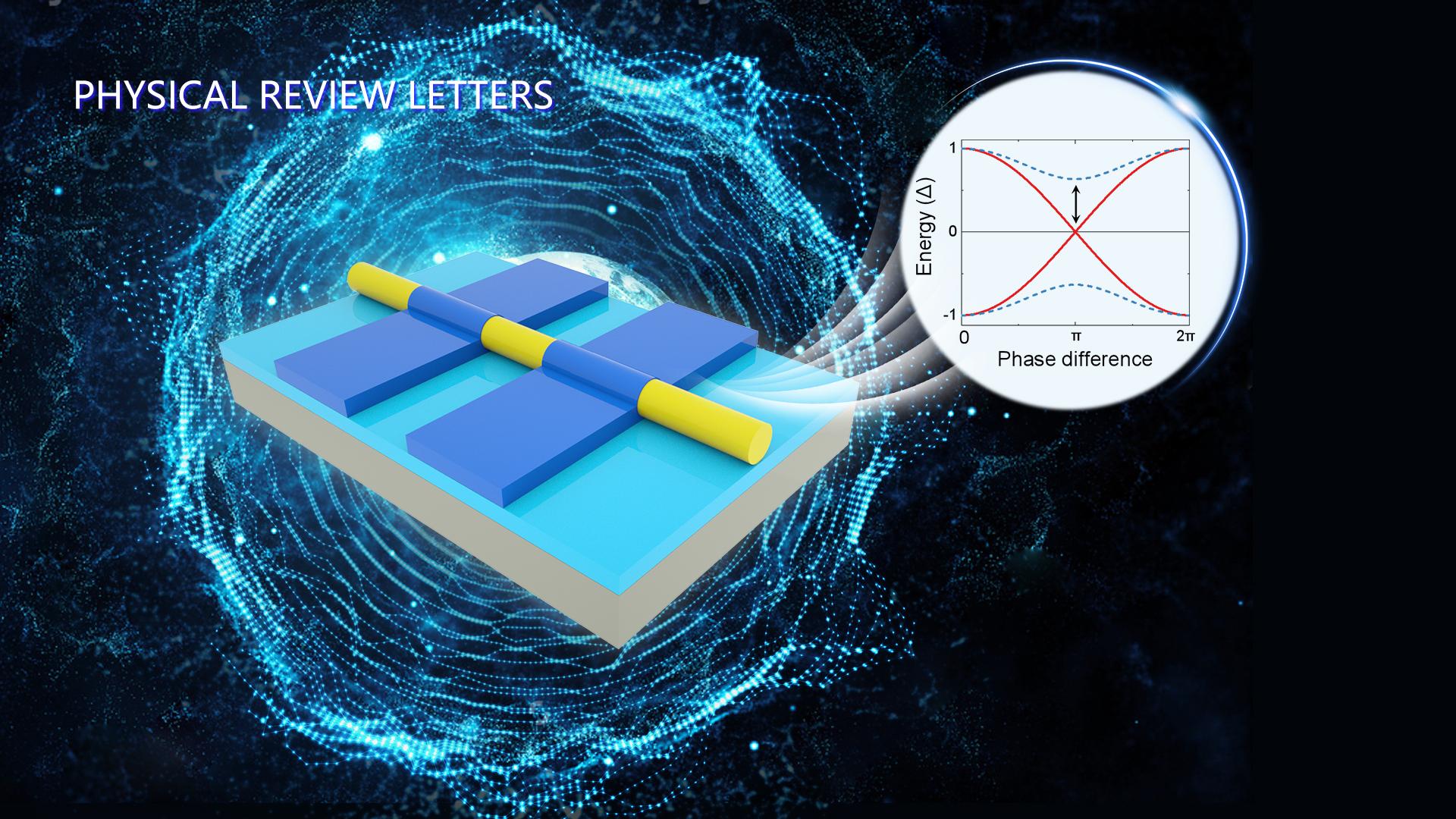SUSTech researchers make new progress in gate-controlled topological transition of superconductivity
Recently, Caizhen Li, a postdoctoral fellow of Academician Dapeng Yu’s group (Shenzhen Institute of Quantum Science and Engineering, Southern University of Science and Technology), in collaboration with Professor Zhimin Liao (Peking University) and Professor Chuan Li (University of Twente), made new progress in gate-controlled topological transition of superconductivity. These results have been published in the highly influential academic journal Physical Review Letters in the title “Topological Transition of Superconductivity in Dirac Semimetal Nanowire Josephson Junctions”. This is the second research published in PRL by Dr. Caizhen Li on quantum transport experiments during her postdoctoral period (the other one is Physical Review Letters 124, 156601 (2020)).

As the human society fully enters the era of information technology, the demand for computing power of computers is getting higher and higher both in daily life and in scientific research. The quantum computer based on the principle of quantum mechanics can significantly improve the computational efficiency, providing a better platform for efficient information processing. However, there are still many technical problems in the construction of a universal quantum computer such as decoherence, which means that the entanglement of multiple qubits is vulnerable to environmental noise, resulting in a decrease in fidelity and an increase in the probability of calculation errors. Topological quantum computing provides a quantum computing method which is immune to decoherence. Topological qubits are free from the interference of environmental noise during the encoding process, thus the calculation fidelity is greatly improved. The theory shows that Majorana zero mode obeys the non-Abelian statistics and is one of the most important routes to realize the topological quantum computing. A critical challenge in the field of topological quantum computing is how to accurately control the generation and disappearance of Majorana zero modes.
In the face of the above challenges, the research team has carried out a series of studies for a long time. Recently, the researchers have realized the gate modulation of Majorana zero modes for the first time in Dirac semimetal nanowire Josephson junctions. By tuning the gate voltage to control the appearance or disappearance of surface quantum confinement effect, the topological property of the system can be modulated. Because of the relatively high electron mobility and low hole mobility in the system, as tuning the gate voltage from electron branch to hole branch, the surface subbands caused by quantum confinement will gradually disappear and topological nontrivial Dirac band will emerge. Based on this gate-controlled topological phase transition, the gate-controlled topological transition of superconductivity can be realized accordingly when coupling the Dirac semimetal nanowire to s-wave superconductors, accompanied by the generation and disappearance of Majorana zero modes. Compared with the conventional semiconductor-superconductor system, this gate-controlled Majorana zero modes in Dirac semimetal nanowires has multiple advantages. The generation of Majorana zero modes in this system does not require an additional magnetic field, so that the type of superconductors used for proximity effect is greatly increased. Besides, the Majorana zero modes in this system is stable in a wide gate voltage range without the requirement of precise modulation of parameters, which is conductive to future compatible and scalable design of topological qubits.
Schematic diagram of the topological phase transition in Dirac semimetal nanowire Josephson junctions.
This work exhibits the gate-controlled topological transition of superconductivity in Dirac semimetal nanowires, giving new insights into the manipulation of Majorana zero modes and topological quantum qubits.
Dr. Caizhen Li, a postdoctoral fellow of SUSTech, and Anqi Wang, a doctoral candidate of Academy for Advanced Interdisciplinary Studies at Peking University, are the co-first authors of the paper. Professor Zhimin Liao from the School of Physics at Peking University and Assistant Professor Chuan Li from the University of Twente in the Netherlands are the co-corresponding authors.
Article link:



